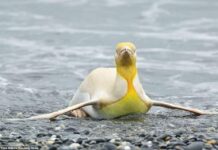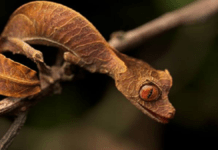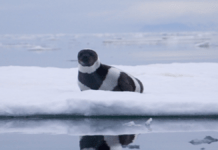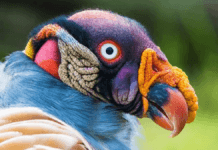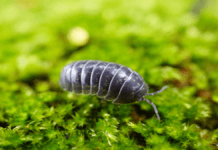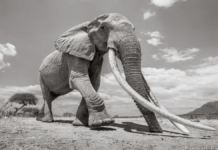Depending on whom you talk to, they’ll call them leaf slugs, sea sheep or bunny slugs. But I’m going to call them Leaf Sheep as it is the most used name. when you see Leaf Sheep for the first time, you may misunderstand that they are not real because of their beauty. But they are actual animals. They are a species of sea slug known by the scientific name of Costasiella kuroshimae.

Many Philippine divers affectionately call this curious sea creature “Shaun the Sheep” because of its similarity to that animated lamb. Even though its name called ‘leaf sheep’, it is neither a sheep nor a leaf. It’s actually a sea slug. They are very delicate creatures with bodies like shell-less snails. Genevieve Reyes, a famous photographer and a diver said, “These leaf sheep do not retract or hide even though they feel your presence. They have a routine life, circling and grazing on the leaf of algae.

These little creatures have black beady eyes situated close to each other. They have rhinophores with black tips sticking out of their white heads and dotted green cerata popping out of their upper body surface. Their cerata are like the skin of an aloe vera plant but with some pink, white or purple tips and have digestive gland branches. And also their rhinophores collect chemical signals in water and allow sea slugs to smell and find their food sources.
People are attracted to these leaf sheep because of their cute faces and interesting shape. Absolutely they are cute little slugs. They grow to a maximum of 7 or 8 millimeters in length. Their lifespan varies between six months and one year. According to Terrence Gosliner, a sea slug expert and a senior curator at the California Academy of Sciences, leaf sheep are hermaphrodites. It means they have both male and female reproductive organs. To reproduce, they need to mate with another individual and produce egg mass. When the eggs are laid, they will hatch into shelled larvae within a week or two. Then they begin their life as small slugs after discarding their shells.

Leaf sheep live on fuzzy-type algae which are called Avrainvillea and grow in areas with soft fine sand. Leaf sheep cannot be found in coral reefs but can be found in areas next to coral reefs. Leaf sheep spend their whole life on previously mentioned algae. Sometimes there are up to 15 or 20 leaf sheep on one algae blade. Sometimes there is even an egg mass of them which looks like tiny little coils.
Leaf sheep not only use Avrainvillea as their home but also as their nourishment source. They graze on the algae and collect its chloroplasts. Then they keep chloroplasts within their tissue for up to 10 days. This process is called kleptoplasty. It allows leaf sheep to fulfill their diet through photosynthesis, which is normally known as only performed by plants. It is one of the few animals that can do it.

Leaf sheep are not in a critical situation. But they have to face several threats to survive. One of them is habitat loss. Human practices such as illegal fishing and using destructive fishing methods like cyanide and dynamite cause to destroy their marine habitats and kill them. And also climate changes impact on losing sea slug habitats. Storms and typhoons which are brought by the warming world damage the marine environment with strong currents that cause dislocation and uproot algae and leaf sheep that live on them. And also mismanaged plastic waste that ends up in the ocean has also become a risk to this leaf sheep.

